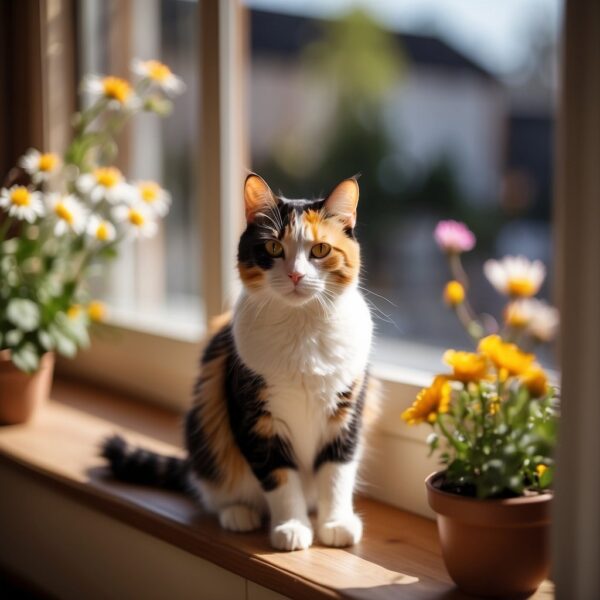
Pussycats: Exploring the Etymology
The term ‘pussycat’ has affectionately been attributed to cats for centuries, with its use deeply rooted in the etymology and historical origins of how these feline companions are addressed. This nickname, often reserved for domesticated cats, conveys a tender and endearing sentiment toward them, reflective of their social and domestic significance within human lives. Its prevalence in literature, such as the fairy tale “Puss in Boots,” underlines its longstanding influence on popular culture as well as its continued relevance today.
Over time, ‘pussycat’ has transcended its direct linguistic meaning to encapsulate the psychological and social aspects associated with cats. These creatures are frequently admired for their various characteristics, including their independence, playful behavior, and comforting presence, which have solidified their status as a beloved household family member. Moreover, the adoption of the word ‘pussycat’ in colloquial usage strengthens its contemporary interpretation, allowing it to resonate with the affectionate qualities often attributed to these animals.
Key Takeaways
- ‘Pussycat’ signifies warmth and endearment towards cats, highlighting their cherished role in human companionship.
- The term encompasses various attributes of cats, including their independence and playful nature.
- Its usage in literature and speech reflects the deep-rooted cultural significance and symbolism of cats in society.
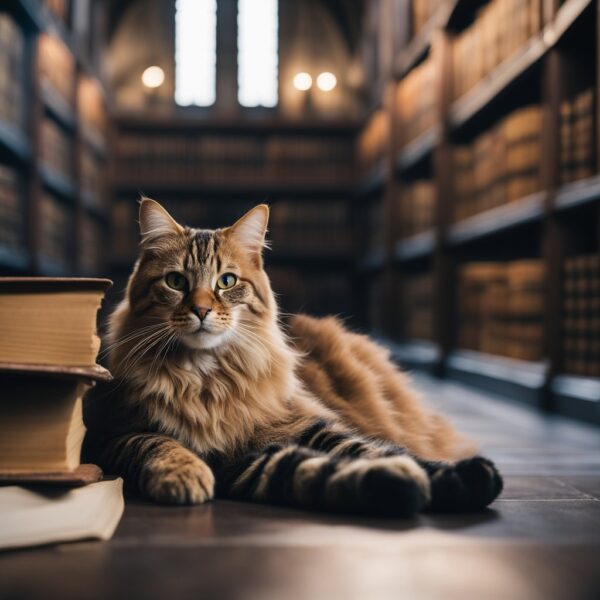
Etymology and Historical Origins of Pussycat
The term “pussycat” has a rich linguistic history, with its origins deeply entrenched in ancient culture and language. This section delves into the etymology and historical contexts that have shaped the affectionate term used for domesticated felines today.
Linguistic Roots
The word “puss” first appeared in English language records in 1533 but can trace its etymological roots further back to the Old Norse language. In Old Norse, the term “pusa” was an endearing reference to cats, akin to “kitty” in modern English. It aligns with similar words in other Germanic languages such as the Dutch “poes” and Middle Low German “p?se.” The consistent thread across these linguistic variations is the affectionate and intimate tone used to refer to felines.
Cultural Significance
In cultural terms, the use of “puss” as a nickname for cats signifies a tender relationship between humans and these animals. Over time, “puss” evolved into “pussycat” in English, carrying forward the endearing sentiment. The term’s presence in various cultures underscores its historical significance as a beloved nickname, transcending languages to become a universal term of endearment for domesticated cats.
Psychological and Social Aspects
In addressing the term “pussycat,” it’s essential to explore its psychological resonance and social nuances, particularly its impact on the human-animal bond and gender connotations.
Human-Animal Bond
Humans have fostered a profound bond with cats, often referring to them affectionately as “pussycats.” This term underscores the affection and connection people feel towards these animals. Psychologically, cats offer companionship that can range from deeply empathetic to a display of their well-recognized independence. The dynamic nature of this relationship often reflects humans’ desire for both empathetic support and respect for autonomy within their own social connections.
Gender Connotations
When exploring the gender connotations of “pussycat,” one notes a historical leaning towards the feminine. The term carries a softness and delicacy often stereotypically associated with women. In contrast, the rugged and masculine traits are less frequently linked to cats, and thus the term “pussycat” can contribute to a gendered perception of these animals. However, it’s crucial to recognize that both men and women can and do form strong connections with cats, suggesting that while the term might carry certain connotations, it does not restrict the psychological bond that can exist across genders.
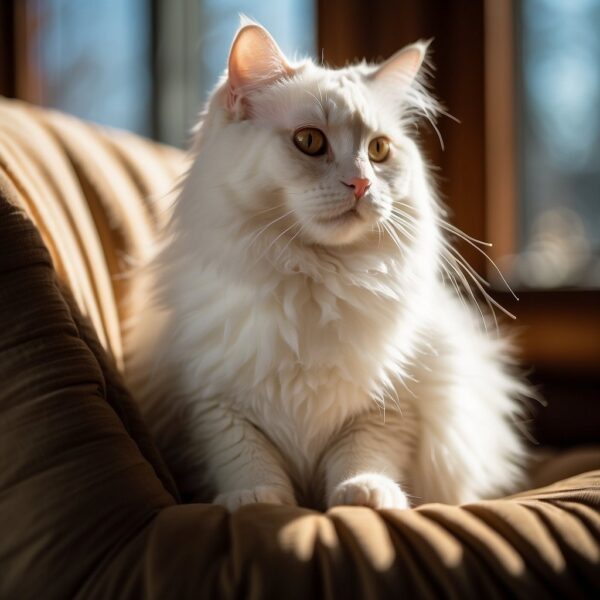
Pussycat Term Influence on Popular Culture
The term “pussycat” has permeated various aspects of popular culture, becoming synonymous with cats in songs, literature, and media. It has solidified its place in expressions, reflecting the affectionate view of cats in society.
Literature and Folklore
In literature and folklore, cats are often referred to as “pussycats”. This term particularly features in children’s nursery rhymes and tales, emphasizing the soft and cuddly nature of cats. “Puss in Boots” is a quintessential example, a fairy tale about a cat who uses trickery and deceit to gain power and wealth.
pussycat term in Music and Media
“Pussycat” as a term has also made its way into music and media. One notable example is the song “The Love Cats” by The Cure, which playfully incorporates the term, celebrating the quirky and endearing qualities of cats. In addition, cats have starred in countless television shows and movies, often being dubbed “pussycats” to highlight their charm and appeal.
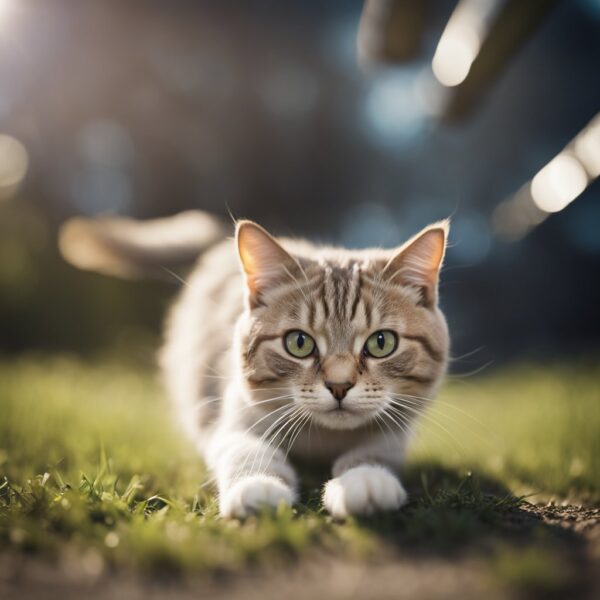
Characteristics of Cats
Cats, often referred to as felines, exhibit a range of distinctive characteristics that define their appearance and behavior. When considering why cats are affectionately named “pussycats,” it is worth examining these traits, which endear them to people worldwide.
Physical Attributes
Size: Cats generally size between a small kitten and a medium-sized adult, with considerable variation among breeds.
Coat: The coat of a cat can be short, long, or medium in length and comes in various patterns and colors. It’s well-known for its softness, contributing to the term “pussycat.”
Eyes: A cat’s eyes are particularly striking, with the ability to adapt their pupil size significantly, giving them excellent night vision.
Whiskers: These long, sensitive hairs on their face provide cats with spatial awareness.
Behavioral Traits
Cleanliness: Cats are known for their grooming habits, often licking their fur to keep themselves clean.
Independence: Felines are famous for their independence, requiring less direct attention than some other pets.
Curiosity: A cat’s curiosity is proverbial; kittens and adult cats alike often explore their surroundings with great interest.
Playfulness: The playfulness of cats, especially kittens, is manifested in their spontaneous and often amusing behaviors.
Temperament: While temperament can vary widely, many cats are generally gentle and sweet creatures, contributing to their appeal.
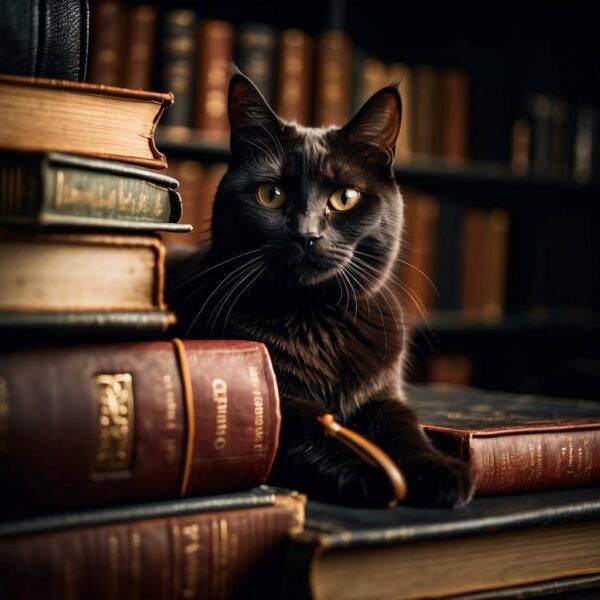
pussycat Names and Nicknaming Practices
When exploring the topic of feline nicknaming, it is crucial to understand that terms like “pussycat” serve more than mere labels; they reflect affection and vary across cultures.
Affection and Endearment
Humans have a long-standing tradition of bestowing pet names upon their animals, often to express affection and endearment. The term “pussycat” is a prime example of such a practice in the English-speaking world. This nickname likely developed out of an intimate, caring relationship between people and their pets. It conveys a sense of something small and cherished—akin to the tenderness one reserves for something or someone precious. The use of “pussycat” signifies more than just a categorical name; it’s often an affectionate call name that may suggest a pet’s status as a beloved member of the family.
Global Variations
Nicknaming practices, especially for pets, vary globally and can provide insight into cultural perspectives. In English, besides “pussycat”, terms like “moggie” (informal in the United Kingdom for a domestic cat) also reflect fondness.
- United States: “Kitty” or “cat” are common, with “pussycat” having an old-fashioned ring to it.
- Australia and New Zealand: Variations like “moggy” or “puss” are often heard in casual conversation.
While the term “pussycat” holds its roots in English, it’s influenced by similar terms from other European languages, indicating an amalgamation and evolution that parallels how cultures adapt and adopt from one another.
Social and Domestic Significance
The term “pussycat” resonates deeply within household dynamics and broader social contexts, reflecting the roles these pets play in human lives and cultural narratives.
Cats in Family Dynamics
In many households, domestic cats, often referred to as moggies, serve as more than mere pets; they are cherished members of the family. Their presence can contribute significantly to the familial ambience, offering companionship and subtle psychological benefits. Studies have shown that interactions with cats can decrease levels of stress and anxiety among their human counterparts, reinforcing the emotional bonds that make cats an integral part of domestic life.
Cats in Society
Cats have occupied various positions in societies throughout history, from being worshipped in ancient Egypt to representing domesticity and familiarity globally. The significance of cats in society can also be noted in religious contexts, such as Islam, where cats are revered for their cleanliness and are well-regarded companions.
Within literature and popular culture, cats often embody characteristics associated with independence and cleverness—traits that also reflect the social roles they fulfill. Their portrayal in tales like “Puss in Boots” exemplifies the esteemed place they hold, often symbolizing wit and resourcefulness. The term “pussycat” suggests affection and endearment, indicating its deep-rooted social and domestic significance.
Pussycats Perceptions and Symbolism
Within the framework of cultural context, the moniker “pussycat” reflects deep-seated perceptions and symbolism associated with felines. It conveys enduring popularity and captivates the essence of femininity and masculinity ascribed to cats through the ages.
Feline Representation in Society
Cats have long held a complex role in cultural symbolism, oscillating between reverence and superstition. Society often views the female cat, or queen, as a symbol of mystery and grace, frequently associated with femininity due to their nurturing behavior towards kittens. Tomcats, or adult male cats, conversely exude a sense of rugged independence and are often symbolic of masculinity. This societal lens intensifies the enduring popularity of cats, with their representation fluctuating from captivating creatures of folklore to beloved household companions.
Cats in Gender Roles
- Femininity: The term pussycat is often used affectionately towards female cats, highlighting traits such as gentleness and caretaking. It is not uncommon to see felines, especially domestics, assume titles such as princess, reinforcing an association with refined elegance.
- Masculinity: In contrast, male felines or tomcats are frequently portrayed as aloof and territorial. Their portrayal in literature and media leans on characteristics like dominance and assertiveness, fostering a link with traditional views on masculinity.
The distinct gendered roles and characterizations contribute to the complex tapestry of how cats are perceived in society and contribute to their captivating presence across various mediums.
Colloquial Usage and Contemporary Interpretations of pussycats
The term “pussycat” has long been an affectionate term for domestic cats, known for their fluffy coats and compelling personalities. In contemporary language, “pussycat” often evokes a sense of endearing appeal, typically serving as a pet name that reflects the animal’s gentle or affectionate nature. Despite shifts in linguistics, this diminutive continues to demonstrate universal appeal. The use of “pussycat” in modern contexts varies, but several aspects contribute to its persistent popularity:
- Universal Appeal: Across cultures, cats are cherished for their companionship, leading to the widespread use of the term.
- Diminutive Form: The addition of “cat” to “puss” may serve as a clarification, but also adds a diminutive quality, suggesting fondness.
- Affectionate Connotation: Calling a cat a “pussycat” often implies a softer, more affectionate relationship with the animal.
In modern usage, while some might argue the term is antiquated, it remains in circulation, especially in literature and media aimed at children, enhancing its enduring appeal. The term has also transcended its literal meaning to describe someone with a gentle or non-threatening demeanor, highlighting its metaphorical versatility.
Here is a summary of the term’s usage in a tabulated format:
| Aspect | Contribution to Contemporary Usage |
|---|---|
| Affectionate Nature | Captures the gentle relationship between humans and cats |
| Fluffy Imagery | Evokes the soft, comforting physical attribute of cats |
| Diminutive Form | Adds a layer of tenderness to the reference |
| Enduring Appeal | Maintained through consistent use in culture and media |
Thus, “pussycat” endures as a term filled with warmth and familiarity, showcasing the special place cats hold in human lives.
Frequently Asked Questions about pussycats
Exploring the origins and meanings of terms used to describe cats can provide insights into language evolution and the relationship between humans and their feline companions.
Where does the term ‘pussycat’ originate from?
The term ‘pussycat’ finds its roots in the English language, possibly derived from Old Norse. The word ‘pus,’ which is a part of the compound word, indicated something cherished, linking back to the endearment with which cats have historically been regarded.
What is the etymology behind the nickname ‘moggy’ for a cat?
‘Moggy’ is a British colloquialism for a cat, particularly a non-pedigree or mixed-breed cat. This term likely originates from ‘Maggie,’ a diminutive form of Margaret, traditionally used as a generic name for a cow, and by extension, applied to cats as well.
How did the nickname ‘kitty’ come to be a common term for cats?
The nickname ‘kitty’ originated as a diminutive form of the word ‘kitten,’ the young of the cat. Over time, ‘kitty’ became a friendly and affectionate way to refer to cats of all ages.
What historical or cultural reasons are there for cats being referred to as ‘pussy’ or ‘pussycat’?
Historically, the term ‘pussy’ or ‘pussycat’ may reflect the affection and tenderness that cats evoke. These terms have been embraced in various cultures and are associated with the playful and affectionate qualities attributed to cats.
Does the word ‘pussycat’ have different connotations when used in different contexts?
Yes, the word ‘pussycat’ can carry different connotations. Typically used as a term of endearment for cats, it may also be used metaphorically to describe a person’s character, suggesting either gentleness or, in a derogatory sense, a lack of toughness.
What are some of the informal or slang terms used to describe cats?
In addition to ‘pussycat,’ ‘moggy,’ and ‘kitty,’ other informal terms for cats include ‘tabby,’ ‘tom’ or ‘tomcat’ for a male cat, and ‘queen’ for a breeding female cat. Each term carries its own nuance or reference to the cat’s characteristics or behavior.